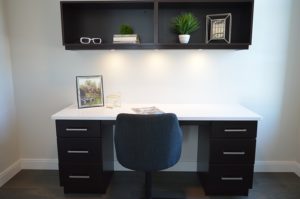 Anyone who’s ever been tasked with the job of improving workplace productivity knows the sheer number of variables involved can be dizzying. When it comes to your typical [city] office, you can approach the problem through ergonomics, floor planning, incentives—the list goes on and on.
Anyone who’s ever been tasked with the job of improving workplace productivity knows the sheer number of variables involved can be dizzying. When it comes to your typical [city] office, you can approach the problem through ergonomics, floor planning, incentives—the list goes on and on.
But one thing instrumental to productivity gets neglected far too often—lighting. Yes, lighting. The amount and kind of light in a workspace, something many, many people take for granted, can make or break a productive atmosphere.
With LED technology, you could hit both birds with one bulb. Here’s how:
1. Switch To ‘Cool’ Light Bulbs
People tend to choose lighting with a yellow to orange hue, which partially explains why many consumers protested the phase-out of incandescent light bulbs. We see yellowish and reddish light bulbs as “warm,” and warmer light promotes the kind of relaxation we associate with home and winding down at the end of a long day.
On the other hand, research also shows that bluish and whitish tones of light disrupt our internal circadian rhythms. This sounds terrible, but is actually great for the workplace. Lighting that discourages drowsiness makes for one less obstacle between you and making the most out of your workday.
Cool lighting has been found to make people more active and alert—qualities any business owner would want in their employees.’
2. Moderate Your Brightness
It turns out many employees still complain about their workplaces not having enough light conducive to work, and for good reason. Dim lighting negatively affects productivity for a number of apparent reasons.
- Inadequate light can cause drowsiness
- It has shown to promote inactivity
- It makes it harder to see whatever it is you’re working on—leading to headaches.
The solution to this is rather apparent as well: make things brighter by adding more light where there isn’t enough of it.
That doesn’t mean, however, that adding and more light bulbs will automatically makes things better. Harsh fluorescent lights have proven to be just as harmful as dim lighting, and have been known to cause eyestrain and even promote migraine headaches.
With lighting, moderation is key. A good way to achieve optimal instead of excessive lighting in the workplace is balancing overhead lights with a “task light” in each individual workspace. You could even go for dimmable lighting options for greater flexibility in this respect.
3. Let The Light In
Part of hating work is the feeling of restriction or being cramped and locked inside an office space. Nothing beats a view of the outside world in all its green-and-blue glory. But aside from its aesthetic appeal, making sure you unobstructed windows lets light natural sunlight into office spaces. And when it comes right down to it, nothing beats the quality and effect of sunlight exposure.
In fact, just as studies show that building occupants tend to be dissatisfied in workplaces with less windows, exposure to natural light has been found to make workers happy, leading to a decrease in reported absences but an increase in overall vitality.
Conclusion
However, natural light isn’t enough. You can also augment natural light with a complementary lighting system indoors. LED light bulbs best mimic the color of sunlight, and would do great to extend this freely available natural source. If it’s the feel of sunlight you’re going for, LEDs are also extensively used in creating artificial skylights.

![Bachelor Pad Design 101: Lighting the Bedroom [city]](https://eepros.com/wp-content/uploads/2018/06/architecture-bed-bedroom-271743-300x168.jpg)
![How to Properly Light Rooms with Low Ceilings [city]](https://eepros.com/wp-content/uploads/2018/11/lights-1867437_640-300x200.jpg)
![Get Smart with Smart Lighting Options [city]](https://8blocks.s3.amazonaws.com/eepros/blog-images/2014/09/ledtop-300x169.jpg)
![The World’s Most Energy Efficient Building Is Not New Construction [city]](https://8blocks.s3.amazonaws.com/eepros/blog-images/2014/09/pwc.jpg)